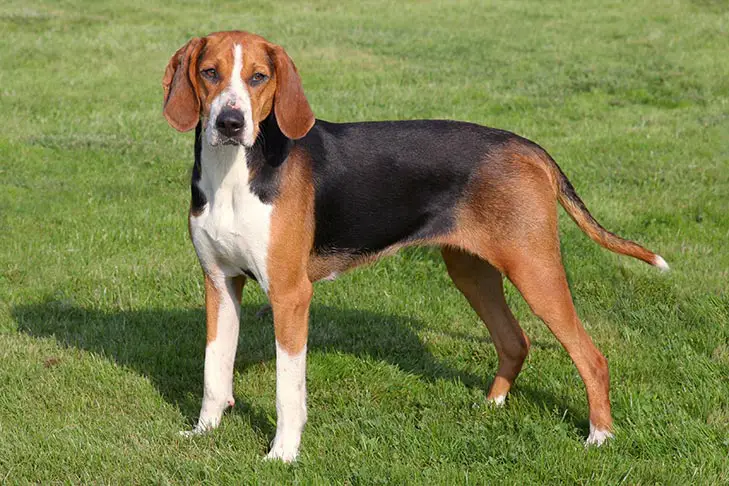The Hamiltonstovare is a multipurpose scent hound that was developed in Sweden for hare and fox hunting. When not out hunting, you can find them in the show ring since they make excellent display dogs thanks to their distinctive color. Since the late 1990s, Hamiltons have been utilized as service dogs in America, where their adaptability and strong relationship with their owners stand out.
Most frequently used as companions, show dogs, and multi-purpose hunters, Hamiltonstovare is a regal and adaptable small package. Leashes and fences are essential for this breed since, as hounds, they follow their nose wherever it leads (and won’t come back for a very long time). The Hamiltonstovare, however, has a significantly higher prey drive for both scent and sight than the majority of scent hounds. They are capable of making great lure-coursing dogs. They are a sluggish, low-maintenance dog that sheds infrequently indoors. Despite their hound tenacity, they can be very food motivated and simple to teach, although higher competitive obedience levels are typically out of the question. Because there is only one Hamiltonstovare breeder in the United States, accessibility is the only significant issue with this breed. Unfortunately, there is also a rescue issue with Hamiltonstovare in the US; some of them can be found in rural shelters in Virginia, North Carolina, West Virginia, Kentucky, South Carolina, and Tennessee.




 Health
Health Grooming
Grooming Exercise
Exercise Training
Training Nutrition
Nutrition